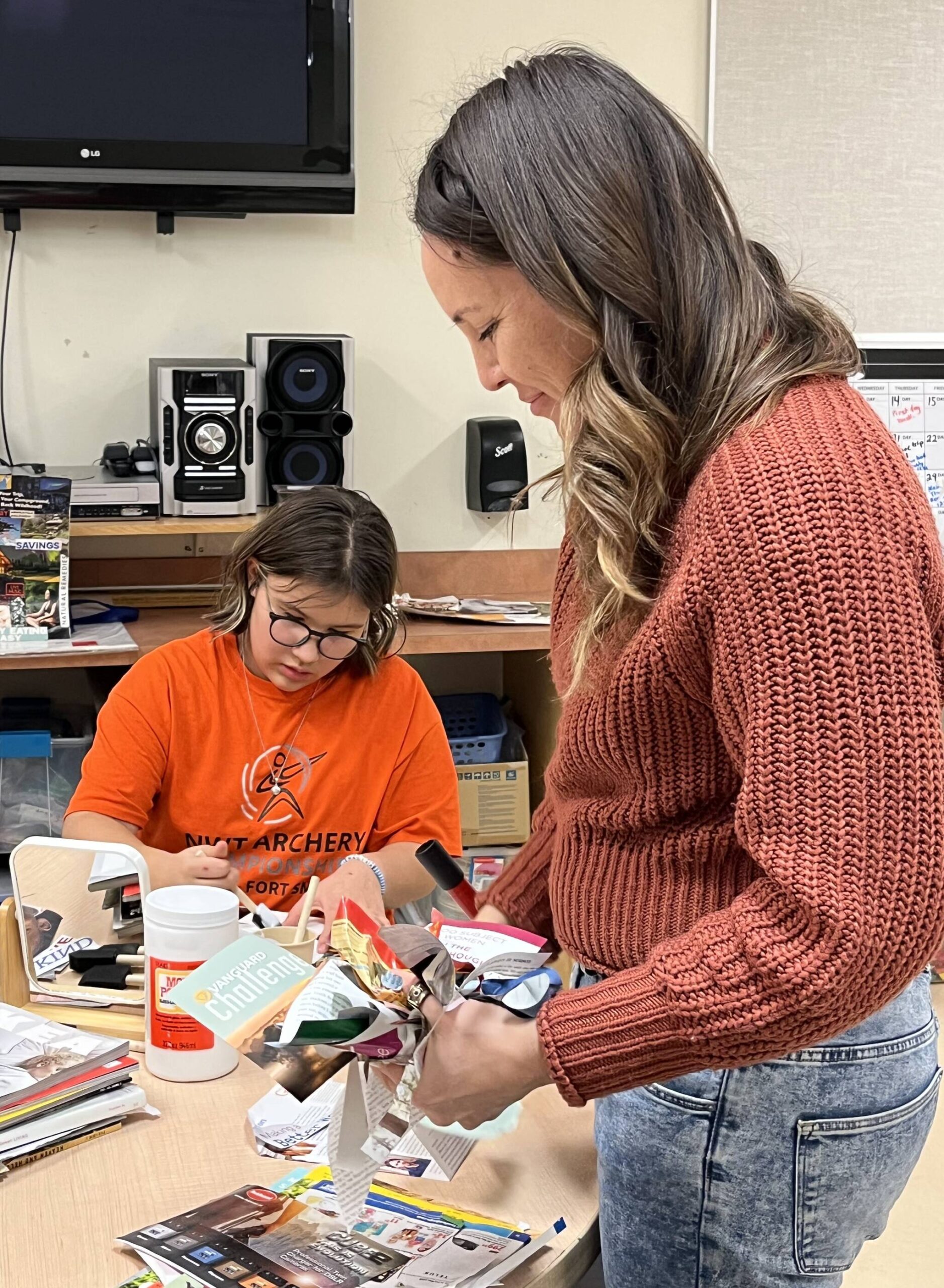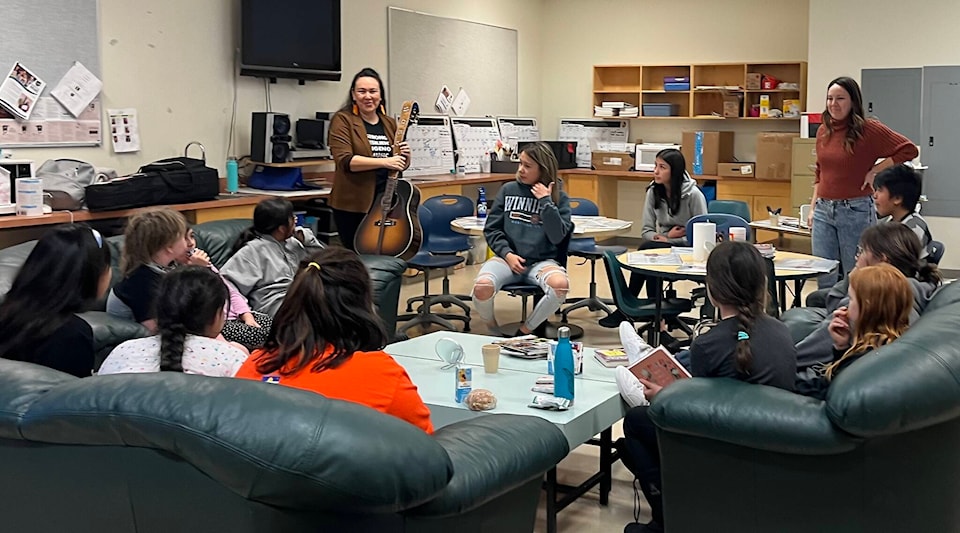An after-school program at Mildred Hall school funded by the Arctic Rose Foundation is helping a group of students’ artistic creativity flourish and develop through mentorships and access to various Indigenous artists and role models.
And whether they dance, sing or paint, the process of consistent learning in a safe environment is providing the students with the foundation of learning expression through various forms of art, said Inuk singer Susan Aglukark, who has been instrumental in bringing what is known as the Messy Book project to Northern youth.
“They’re learning ways to engage healthy emotion. These are basic tools that we all have that we just need guidance around. And that’s really the end goal - which is the healthier we are, the healthier we will be in pursuing our dreams and our goals,” Aglukark, the founder and program developer of the Arctic Rose Foundation, said.
Andrea Harding, regional Indigenous languages and education coordinator for the Yellowknife Education District No. 1, said having the program at Mildred Hall - the first time it has been implemented in the Northwest Territories - is a “fantastic opportunity” for the students.
“We’re allowing the students that freedom of expression, to build that competence and that carries over into other parts of their lives. That carries over, inside and outside of school,” Harding said.
While the program is arts-based, Harding said it is not solely limited to art.
“So they’re creating art, music, and anything else that they have. It’s a space for youth to express themselves through art, but any child can be an artist, and I think it just provides a safe space for them to express themselves through different mediums.”
Guiding approach
Aglukark said the program itself is guided in that it provides consistency in its approach.
“So it isn’t a ‘create as you wish’ situation. It is a process. We are process versus product.”
Aglukark said the process involves hiring and training high school students to help run the program as well as including a roster of Indigenous guest artists for one week per month to mentor the participants.
The high school students are trained to become Community Artist Liaison and Mentor (CALM) workers and CALM Worker Mentees, who provide on-call support.
The guest artists also must undergo specific training and have certain criteria before applying to the program, she added.
While the program is not clinical therapy, Aglukark said it incorporates how to use expression and emotion as a basic mental health tool and it connects the youth with their culture, thereby promoting their mental wellbeing.
“It’s never therapy, but if they know they are safe there emotionally, they will participate safely. It is helping us access and learn to sit with emotion and to guide it through expression through art.”
Sharing creativity
At the Mildred Hall program, where close to 15 students participate, sisters Leela Gilday and Carla Taylor have recently been the guest artists.
Gilday is a singer/songwriter while Taylor is a visual artist/illustrator.
Gilday said she was pleased to be part of the project.
“I’ve always admired Susan’s dedication to bringing healing to youth through art
and so when she asked me if I’d like to become one of the artists in their artists roster, for the Arctic Rose Foundation, I said yes, I’d be delighted to take the training and see where it goes,” Gilday said of the program which had its beginnings in several Nunavut schools.
An important part of the program is having the awareness surrounding mental health and trauma-informed mental health, she noted.
“Many of the kids who come into the room are, like us, Indigenous people who have a legacy of colonial trauma.
“The whole idea behind it is just to give kids a chance to express themselves and have a safe space to do that. The healing powers of art and personal expression through art are really well documented. So it’s a really great program.”
During her participation, Gilday said she is writing a song with the students and sharing with them her experience about how powerful art has been in her life, while her sister Carla is doing a project of creating a self-portrait and a vision board.
“So it’s really about embracing the strength and value of their own voices and taking my skills and showing them how beautiful and powerful that can be.”
Possible expansion
Aglukark said an overall goal of the Foundation is to expand the program to schools throughout the North.
“I feel very strongly that it’s been my experience in my career that art and music have played a large role in my own healing journey. And so I feel very strongly that we should have arts and drama and music and all forms of expression in every school.
“And so that’s my goal. The funding we received has us targeting more locations in the Northwest Territories. The more money we raise, the more places we can expand to.”
More information on the Arctic Rose Foundation can be found on their website: www.arcticrose.org.

